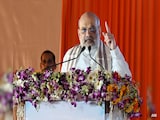- US tariffs on Chinese imports remain at around 55 percent as a status quo
- No immediate plans to lower tariffs before the November 10 trade truce expiry
- Tariffs could rise to 145 percent for US and 125 percent for China if no deal is made
U.S. tariffs on Chinese imports of around 55% are a "good status quo," but the Trump administration would like to find areas where bilateral trade could increase more freely, U.S. Trade Representative Jamieson Greer said on Tuesday.
Greer's comments at the Economic Club of New York indicated no immediate move towards lowering President Donald Trump's tariffs on Chinese goods ahead of a November 10 deadline for the expiration of a trade truce between the world's two largest economies.
"If you ask the president, 'Do we have a deal with China?' He would say, 'Yeah, this is our deal. I've got 55% tariffs on it. That's the deal.' So that is a good status quo," Greer said.
But he said he wanted to continue regular discussions with Chinese officials to try to achieve a more balanced trade relationship, where the two sides can increase trade in "non-sensitive goods" such as U.S. agriculture products and Chinese consumer goods.
"I would like to get to a position with them where...we can trade, and we can trade a little more freely and in a little more transparent kind of way," Greer said.
"But for now, that's where we are," he added regarding the 55% U.S. tariff rate including Trump's first term tariffs on Chinese goods and China's corresponding rate of over 10% on imports U.S. imports.
Unless U.S. and Chinese officials agree to extend these rates, they are due to snap back to about 145% on the U.S. side and 125% on the Chinese side on November 10 -- rates that would virtually halt all U.S.-China trade.
During mid-September talks in Madrid on trade and Chinese video app TikTok, China's Vice Premier He Lifeng had sought U.S. tariff reductions in exchange for ceding ownership control of TikTok to a U.S.-based consortium, a concession that Greer and U.S. Treasury Secretary Scott Bessent rejected.
Greer said that Chinese negotiators have been "feeling their oats a little bit more" due to China's leverage over global supplies of rare earth minerals and magnets, and have made more demands.
He also noted that China's more abrasive "wolf warrior ethos" in diplomacy in recent years is bleeding into U.S.-China economic relations and has put a "political edge" on talks that were more technical in the past.
"But we're, you know, we're working through it. We're meeting with them frequently," Greer said.
He added that there is a lot of respect on both sides and string communication is helping to avoid policy surprises on both sides.
(Except for the headline, this story has not been edited by NDTV staff and is published from a syndicated feed.)














